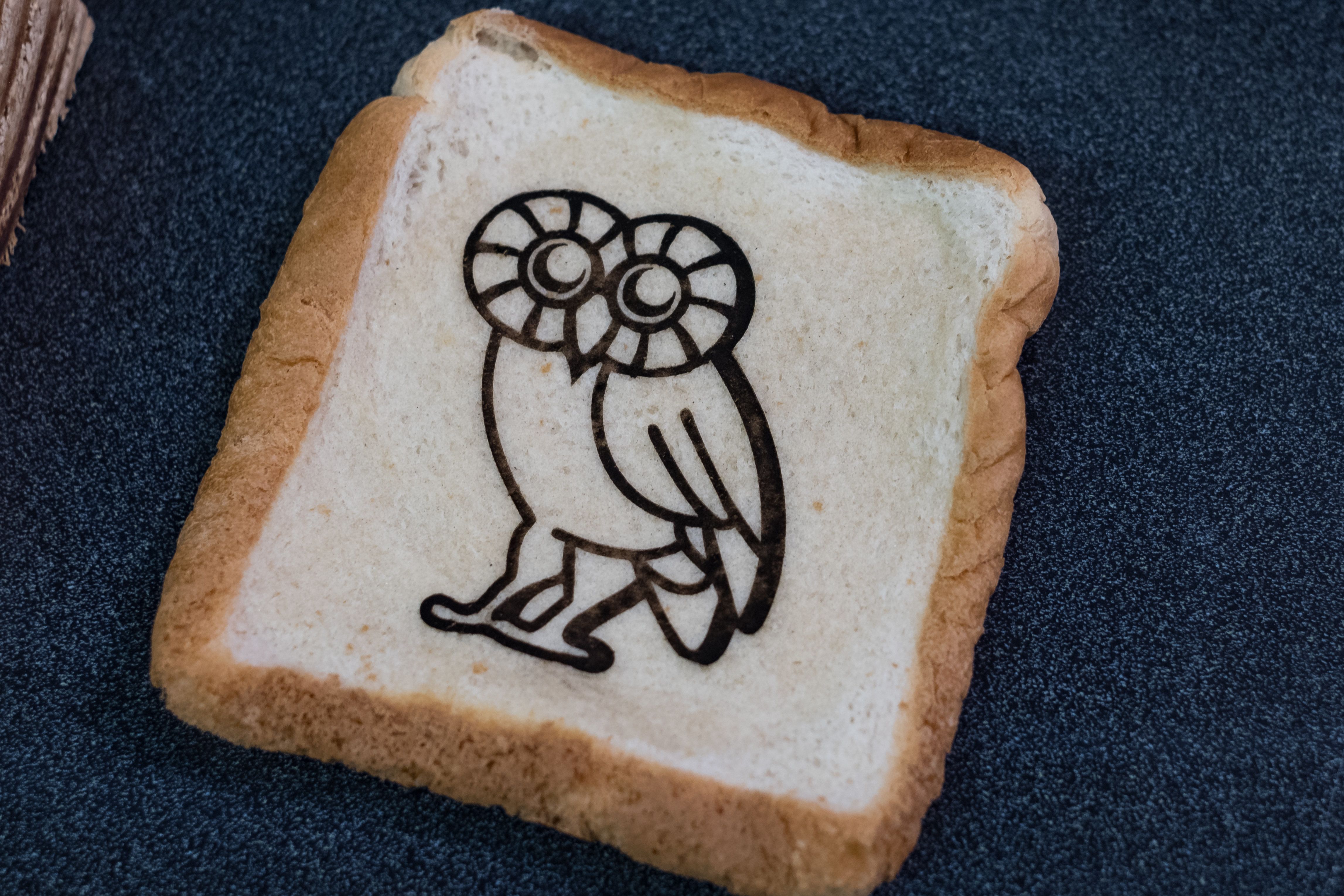Sensors you can eat on toast
Sensors can be woven into clothes, worn on the body like a tattoo and of course carried on the wrist. But researchers at Rice University may have found a way for you to eat them too — printing images on cardboard and even food.
Using graphene, a form of carbon, scientists use a laser to etch the surface of a piece of food, for example, with the image or graphic which then can act as a RFID tag — with information like an expiration date, or even calorie count. Writing in the American Chemical Society's ACS Nano, researchers tested the technology on food items including potatoes, coconut shells, and also toast.
Sensors carry information and are in our devices like smartphones, smart watches and even in our smart home products like a connected lock or thermostat. Usually these are chips. But we've seen sensors made thin enough to be placed on top of the skin and even woven into clothes, like Levi's Commuter jacket.
The process used at Rice University involves using multiple passes of a laser on to the surface to create the RFID tag. The materials only need lignin, which is in the cell walls of plants and helps make them more rigid. Researchers noted that coconut shells, cork and potatoes happen to have high concentrations of lignin. So too do green beans and even almond shells.
Rice University chemist James Tour has previously worked with graphene — interested in how certain carbon-based materials could be turned into the substance, including Girl Scout cookies. And Tour believes the information that could be stored on the graphene image could be helpful not only to those who work in the food industry, or grocers — but consumers as well.
"They could light up and give you a signal that you don't want to eat this," Tour says, in a release. "All that could be placed not on a separate tag on the food, but on the food itself."
